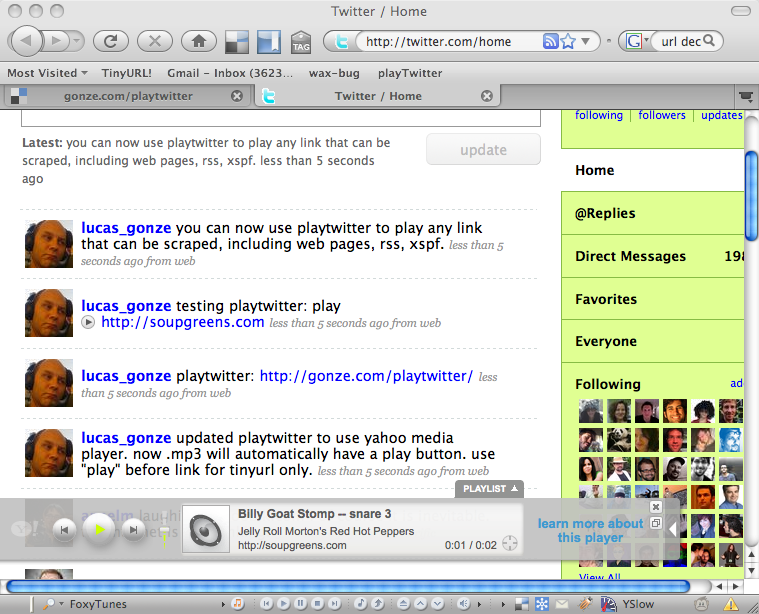TinySong is an interesting and original piece of work.
Like Seeqpod and MixTurtle, it’s a search engine for free-range MP3s. But those apps are designed to lock you in to listening in the context of their own web pages. They won’t even give you song URLs for your search results, even though their own business relies on other people publishing URLs.
What TinySong does is different: it gives you a URL that you can use to share the song with friends. Like TinyURL the URL is a short link pointing to their web site which redirects to a remote web site.
This way of doing things complements and integrates with the rest of the web.
There are already many places to listen to music. Apps like MixTurtle block you out from getting to them. Like a pushy salesman, they grab your attention stream and try to prevent you from leaving. TinySong does the opposite. Like a great salesman it makes itself helpful when you need it, then gets out of the way.
TinySong has only one little thing which is special about it, and it invests all its energy there.
TinySong interoperates easily with the rest of the web because it uses the universal API: the URL. You can almost never use Open Social to interface your app with social networks. You can almost always paste in a link.
But TinySong doesn’t work on the level of MP3 links. It works with web pages that expose the media in whatever format they want to, whether as a streaming ASF, the Ogg applet on Wikipedia, or a Flash player. The media file is on a lower level than the user is thinking about. Maybe the user will want to download, but that’s not what TinySong is for. It is for getting a shareable reference to a song, so you can illustrate your comments with listenables.
As a result, TinySong will be a very hard target for legal pressure. Apps like MixTurtle can be forced to incur endless legal bills and have real risk to their investors of getting blown out of the water with a big judgement. TinySong is too light and discrete for that. Not only doesn’t it host the song, it doesn’t host the link or do playback. All it does is give the user a pasteable link.This is an innovative legal angle.
The big downside is that it seems to only index one source right now — a thing called GrooveShark. That’s a big limitation, but I’m assuming it’s temporary.
See also: Crenk.com on MixTurtle.
